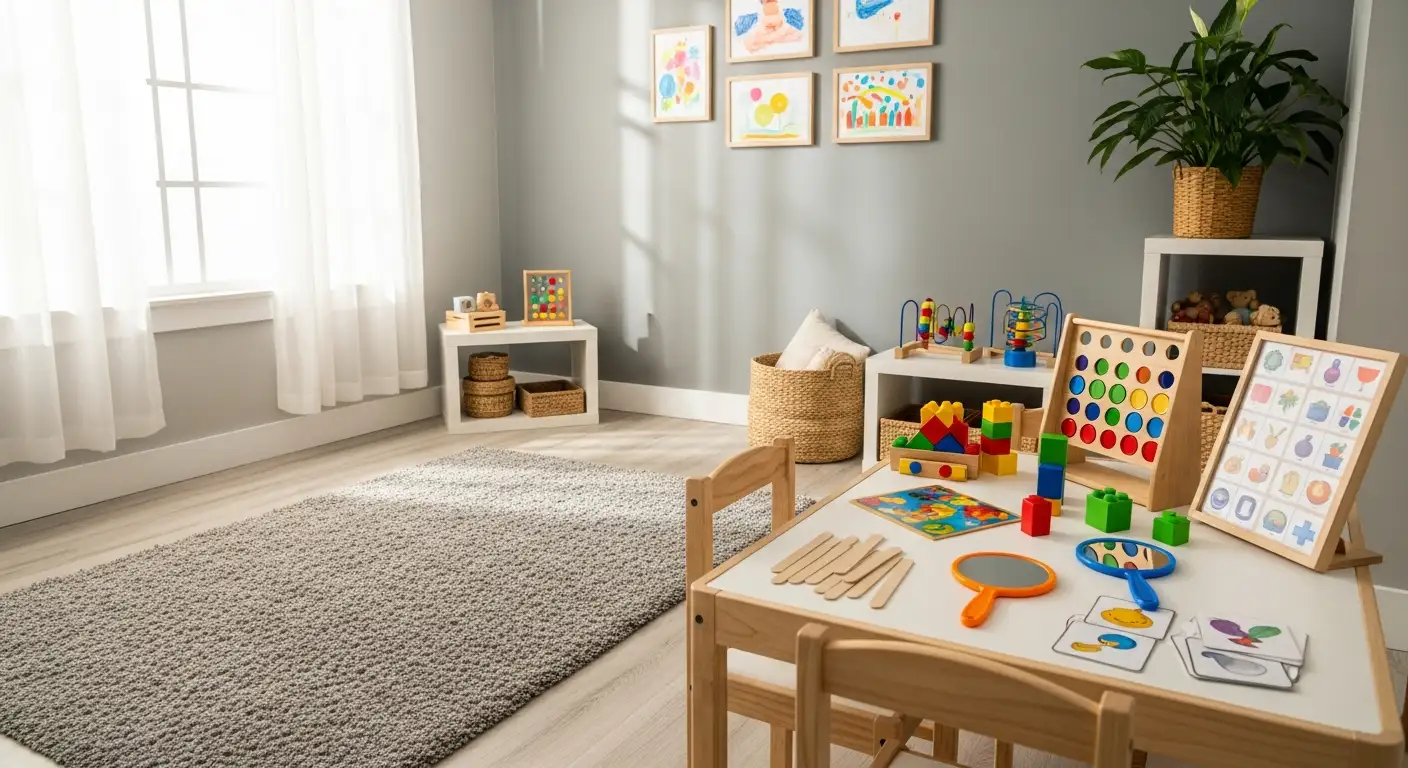Understanding the Foundations of Effective Autism Therapy
Building strong, trusting relationships between therapists and children with autism is a cornerstone of impactful intervention. These relationships are vital for improving communication, social skills, emotional regulation, and overall developmental outcomes. This article explores the multifaceted role of therapists in establishing and maintaining these meaningful connections, highlighting strategies, techniques, and the importance of collaboration with families.
The Crucial Role of Therapists in Autism Interventions
What is the role of therapists in establishing effective relationships with children with autism?
Therapists are fundamental in creating strong, meaningful bonds with children who have autism. They use an intentional and attuned approach, meaning they actively seek to understand and respond to each child's unique needs, preferences, and strengths.
By employing models like the Intentional and Attuned Therapeutic Relationship Model, therapists focus on building trust and fostering collaboration. This approach emphasizes respecting the child's perspective, encouraging engagement, and creating a safe, supportive environment. Such relationships help children feel more comfortable, which can increase their willingness to participate and learn.
Throughout therapy, building rapport is enhanced by sharing interests, utilizing positive interactions, and integrating activities that children find enjoyable. For example, therapists model social behaviors and incorporate each child's special interests, such as a fascination with fairy stories, into sessions to promote social skills in a relaxed setting.
Involving the child's family is also crucial. Caregivers act as vital partners in therapy, and strategies like family-based interventions—such as the Relationship Development Intervention (RDI)—strengthen the systemic alliance between the child, family, and therapist. This collaborative effort ensures consistency and reinforces learned behaviors.
Research supports that such a relationship-centered approach not only improves emotional regulation and social responsiveness but also supports neurobiological development. Play therapy, for instance, promotes neuroplasticity, leading to the formation of new neural circuits, increased levels of brain-derived neurotrophic factor (BDNF), and changes in neurotransmitter activity.
In summary, therapists who foster trust, employ personalized strategies, and include caregivers in the process greatly enhance the effectiveness of autism interventions. This relationship-building is a foundation for ongoing behavioral, emotional, and social growth in children with autism.
Why Building Relationships is Fundamental to Autism Therapy
Why is relationship-building important in therapeutic interventions for children with autism?
Establishing a strong relationship with children with autism is vital for effective therapy. When a trusting bond forms between the child and therapists or caregivers, it creates a foundation for meaningful engagement and learning.
A positive therapeutic alliance has been linked to better treatment results, including reductions in core autism symptoms and behavioral issues. Children tend to be more willing to participate, comply with activities, and stay engaged when they feel safe and understood.
Research shows that relationship-building enhances emotional regulation, helping children manage stress and feelings of anxiety more effectively. It also improves interactions between parents, caregivers, and therapists, which supports consistent and coordinated care.
Importantly, developing these strong bonds does not depend on the child's severity of autism. Whether a child has mild or severe symptoms, a good relationship fosters a comfortable environment for growth.
In summary, dedicating effort to build trusting relationships amplifies the success of behavioral and therapeutic interventions. It creates a supportive atmosphere where children are more inclined to participate actively, leading to better progress and more positive outcomes.
Strategies and Techniques for Building Trust and Rapport
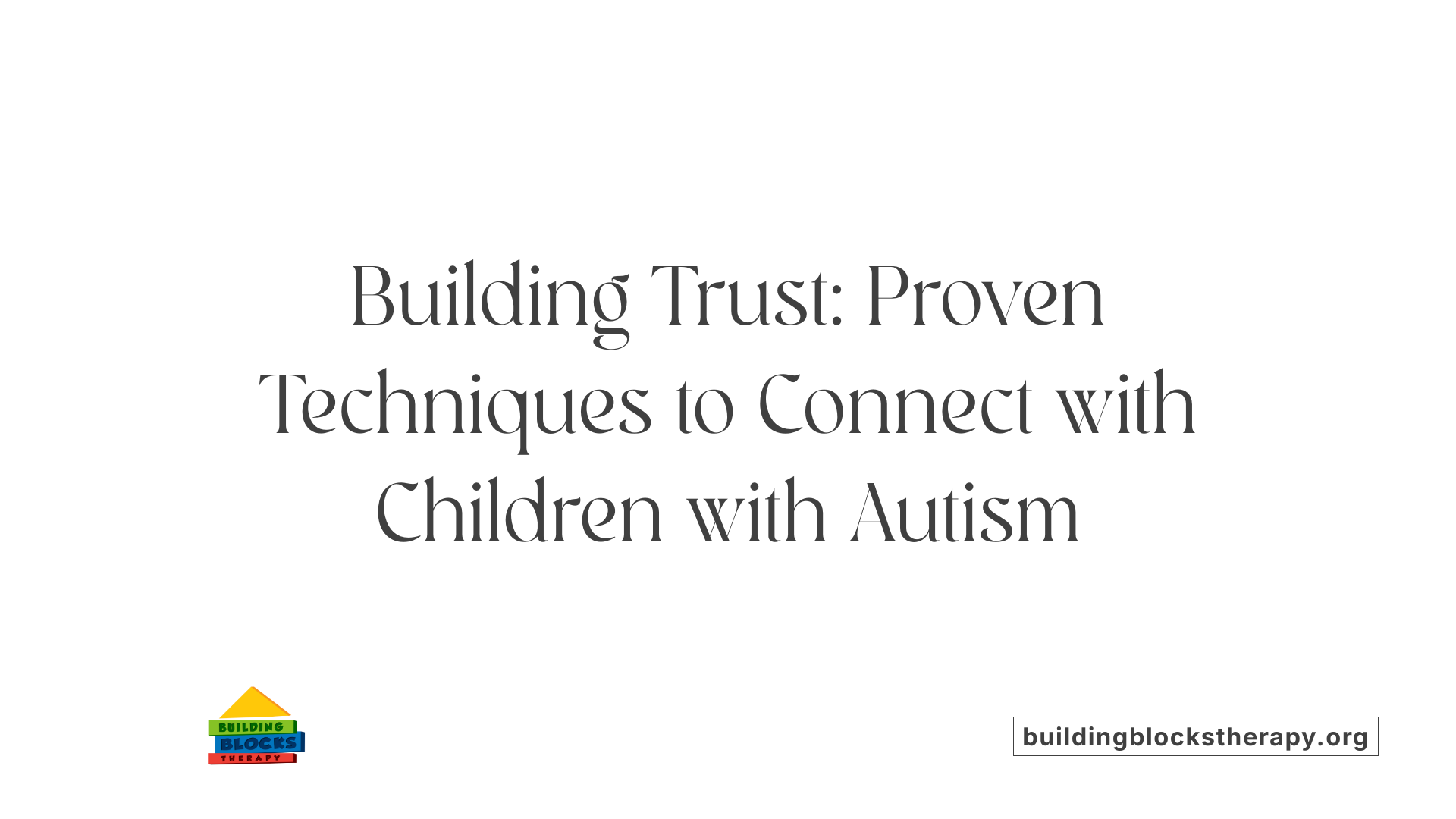
What strategies and techniques do therapists use to build rapport and trust with children with autism?
Building strong relationships with children with autism is essential for effective therapy. Therapists often start by using personalized, developmentally appropriate methods tailored to each child's unique needs, interests, and strengths. Incorporating a child's favorite activities or special interests—such as Camille's fairy intrigue—creates a sense of familiarity and enjoyment, making therapy sessions more engaging.
Play therapy plays a central role in forming bonds. Through naturalistic interventions like the Early Start Denver Model (ESDM) and DIR/Floor Time™, therapists encourage social engagement by integrating play and everyday activities. These approaches help children feel more comfortable and motivated to participate.
Visual supports, including social stories, visual schedules, and video modeling, help clarify expectations and routines. They reduce uncertainty and anxiety, making communication more predictable and less stressful for children.
Parents are also vital in building trust. Training and involving family members reinforce consistency and collaboration, strengthening the therapeutic alliance. Recognizing and respecting each child's sensitivities and communication style further enhances engagement.
By adopting a flexible, personalized, and fun approach, therapists can foster a trusting relationship that promotes learning and emotional growth. This trust foundation encourages children to express themselves more freely and participate actively in therapy sessions.
How do play therapy, naturalistic interventions, and visual supports contribute?
Play therapy creates a relaxed environment where children can explore and engage at their own pace. Naturalistic interventions like ESDM and DIR/Floor Time™ embed therapy within typical activities, making learning feel natural and enjoyable.
Visual supports serve as tools to bridge communication gaps, providing clear, concrete cues that help children understand social cues and expectations. These strategies together build a safe space where children feel valued and understood, laying the groundwork for meaningful progress.
The Role of Play Therapy and Interventions in Relationship-Building
How does play therapy help in creating a safe, engaging environment?
Play therapy provides children with autism a space where they feel safe and understood. Using toys and activities of their choice, therapists foster an environment that encourages children to express themselves without fear of judgment. This sense of safety and familiarity makes children more willing to participate, helping them feel valued and respected.
Engagement is further enhanced through incorporating children’s interests, routines, and cultural traditions, which make therapy sessions comforting and meaningful. Establishing routines and familiar activities helps children develop trust, reducing anxiety and promoting a sense of belonging.
How does play therapy facilitate nonverbal expression and emotion exploration?
Children with autism often struggle with verbal communication. Play therapy allows them to express emotions and thoughts through play rather than words. Toys, art supplies, and symbolic activities enable children to communicate feelings, frustrations, or joys nonverbally.
Exploring emotions in a playful setting helps children understand and manage their feelings. This process encourages emotional awareness and regulation, which are critical skills for social development.
What techniques like role-playing, storytelling, and sensory play are used to strengthen relationships?
Role-playing allows children to practice social interactions and problem-solving in a supported setting, leading to improved social skills.
Storytelling engages children’s imagination and language skills while providing a platform for sharing experiences and feelings.
Sensory play, involving activities like textured toys or soothing routines, helps children with sensory sensitivities feel more comfortable and engaged.
These techniques foster rapport by creating joyful, meaningful experiences that promote trust and open communication.
How do these play interventions support overall relationship-building?
Effective use of play-based techniques promotes a strong emotional bond between children and therapists. As children experience success and enjoyment during play, they develop positive associations with therapy sessions.
Moreover, these approaches reinforce the child's sense of competence and independence, strengthening their confidence to explore social interactions.
Family involvement further enhances relationship-building by enabling caregivers to participate actively, using similar play strategies at home to maintain progress and deepen connections.
By nurturing trust and emotional safety through play, therapists can facilitate better cooperation, reduce resistance, and support overall developmental gains in children with autism.
Impact of Therapeutic Relationships on Treatment and Development
How do therapeutic relationships influence treatment outcomes and development in children with autism?
Building a strong, trusting relationship between children with autism, their parents, and therapists significantly impacts how well treatment progresses. When children feel safe and connected, they are more likely to engage, cooperate, and stay motivated during therapy sessions. This emotional bond encourages children to participate actively in activities, making interventions more effective.
Parental involvement is also essential. When caregivers and therapists communicate effectively, set shared goals, and work collaboratively, treatment adherence improves. This partnership helps parents support their child's progress at home, reinforcing skills learned during therapy.
Research shows that early interactions and mutual attunement—where adults and children are emotionally synchronized—predict positive outcomes. For example, children with autism who experience consistent, predictable, and caring relationships tend to develop better social and communication skills.
Moreover, addressing parents’ stress and attitudes toward treatment is vital. When caregivers feel supported and confident in the therapy process, they are more likely to stay committed and involved.
Influence on engagement, motivation, cooperation
Therapeutic relationships boost a child's willingness to participate. Fun, engaging activities tailored to the child's interests—like modeling behavior or integrating special interests such as fairy play—make sessions enjoyable. This enjoyment enhances cooperation and motivation.
Treatment adherence and familial collaboration
When parents and caregivers trust the therapist and perceive progress, they are more likely to follow through with recommended strategies. Open communication, transparency, and celebrating milestones during therapy foster a positive environment, which encourages ongoing participation.
Predictive value of early interactions and mutual attunement
Early bonding and emotional regulation abilities serve as predictors for treatment success. Children who form strong early attachments tend to respond better to interventions, thrive in structured routines, and exhibit reduced anxiety. Mutual attunement between children and adult caregivers creates a foundation where children feel understood and safe, paving the way for meaningful developmental gains.
| Aspect | Impact | Additional Details |
|---|---|---|
| Engagement and Motivation | Higher participation and enthusiasm | Activities aligned with interests foster fun and investment |
| Treatment Adherence | Consistent implementation of strategies | Strong relationships motivate families to follow plans |
| Parent and Child Interaction | Improved social and emotional skills | Early attunement predicts better communication outcomes |
| Overall Development | Enhanced social, communication, and adaptive skills | Emotional bonds support neurodevelopmental progress |
Fostering positive therapeutic relationships is not just about immediate engagement—it sets the stage for sustained development and improved quality of life for children with autism. These relationships serve as the backbone for successful intervention, creating a supportive environment where children can thrive.
Facilitating Social and Emotional Skills through Relationships
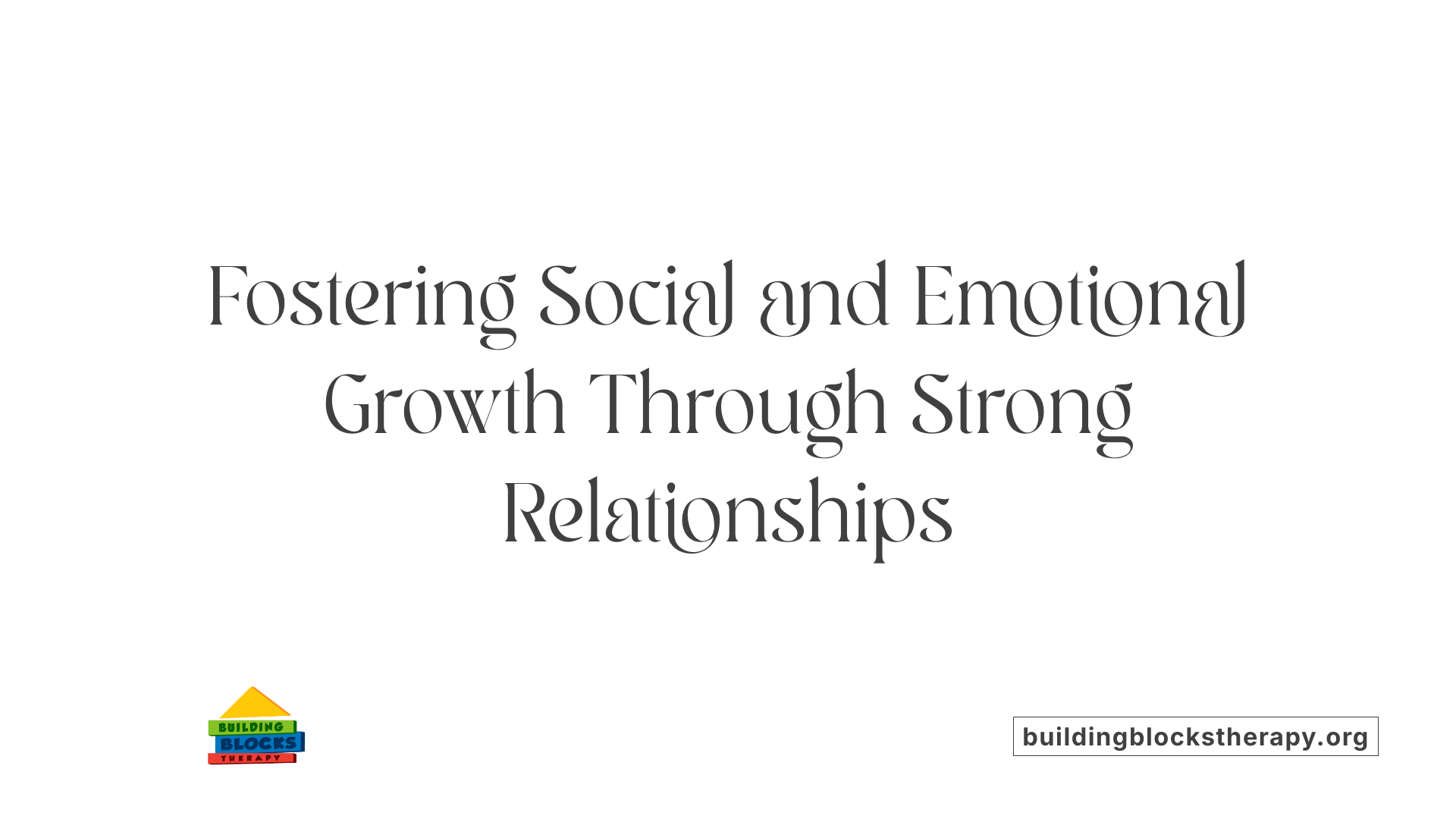
How do therapists facilitate social skills, emotional regulation, and classroom readiness through relationship-building?
Therapists play a vital role in enhancing social and emotional skills in children with autism by focusing on establishing strong, trusting relationships. Building a bond of trust creates a safe space that encourages children to participate, experiment, and learn.
One effective approach is the use of social stories and scripts. These are personalized narratives and dialogues that help children understand social situations, predict outcomes, and practice appropriate responses. When combined with modeling—where therapists demonstrate desired behaviors—children can imitate and internalize these skills.
Naturalistic settings, such as playrooms, school environments, or everyday routines, are used to practice social interactions in real-life contexts. This helps children generalize their skills beyond therapy sessions.
Interventions like social skills groups foster peer interaction, allowing children to learn from and with others. Behavioral strategies like Applied Behavior Analysis (ABA) focus on reinforcing positive social behaviors, while approaches such as DIR/Floortime prioritize emotional connections and developmental progress through play.
Additionally, technology-based tools, including virtual reality programs and interactive apps, are increasingly incorporated to engage children and promote social learning. Creative therapies like music, art, and drama also provide expressive outlets that support emotional regulation.
Overall, relationship-building forms the foundation for all these strategies. A supportive, engaging environment stimulates motivation, reduces anxiety, and encourages children to practice and improve their social and emotional skills across various settings.
The Neurobiological Impact of Play and Relationship Building
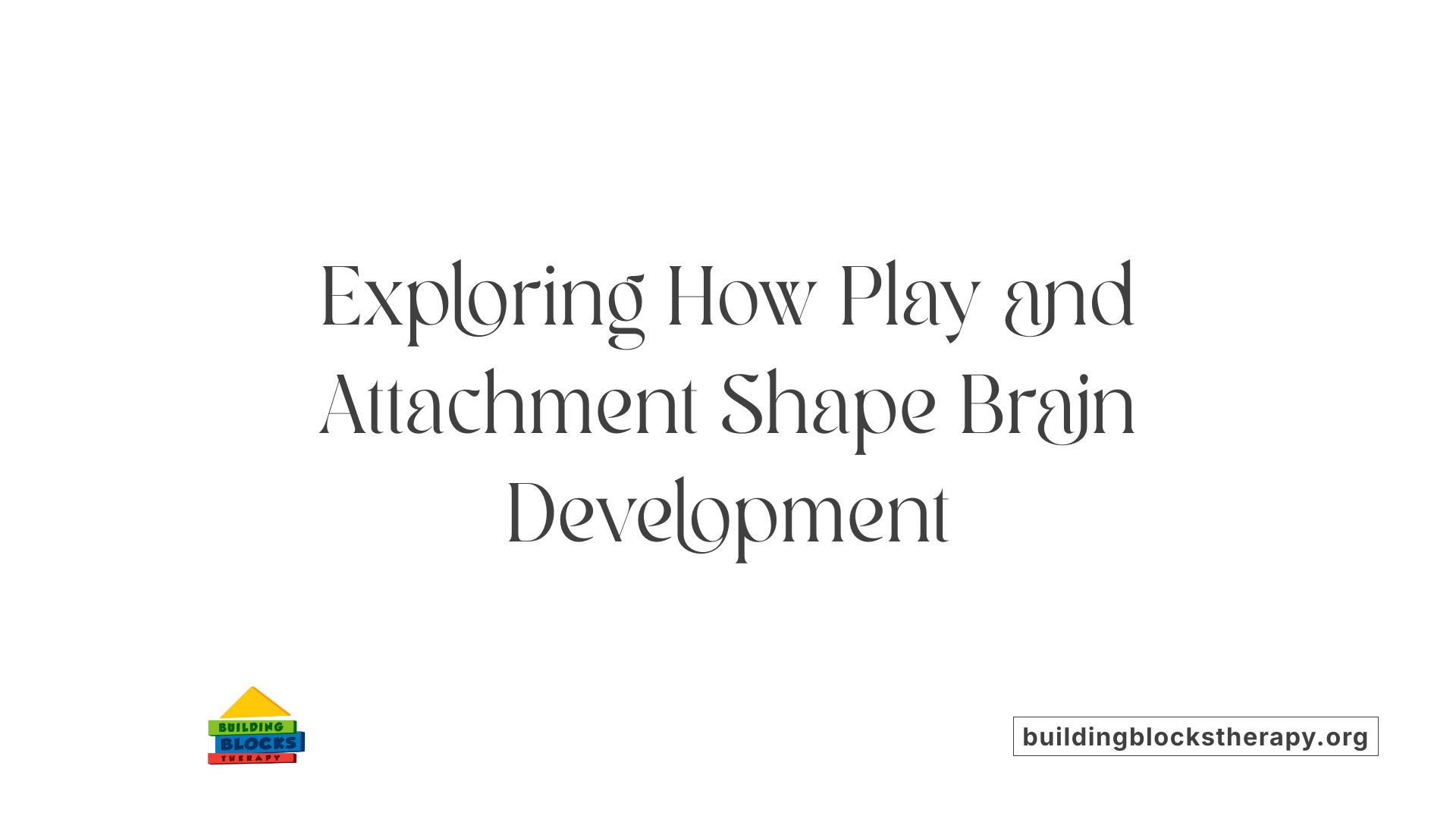
Does play therapy and relationship building have neurobiological effects?
Yes, engaging in play therapy and fostering strong relationships with children with autism can trigger significant neurobiological changes. These approaches don't just influence behavior; they also support brain development at a cellular level.
Research shows that these interventions promote neuroplasticity, which is the brain's ability to reorganize itself by forming new neural connections. This capacity is incredibly important for children with autism, as it allows their brains to adapt and develop new skills.
One notable effect is the increase in levels of brain-derived neurotrophic factor (BDNF). BDNF plays a crucial role in supporting neural growth, survival, and synaptic plasticity. Elevated BDNF levels due to therapy can enhance learning and memory, help repair neural circuits, and improve overall brain function.
In addition to BDNF, play therapy and strong relationships influence neurotransmitter activity. These chemical messengers are essential for communication between neurons, affecting mood, attention, and social behavior. Changes in neurotransmitter levels following therapeutic interventions can lead to better emotional regulation and social responsiveness.
Overall, these neurobiological effects form the foundation for many of the behavioral and emotional improvements observed in children undergoing therapy. They underscore the importance of relationship-centered approaches and play-based interventions in fostering brain resilience and growth in children with autism.
The Dynamics of Therapeutic Alliance Over Time
What does research say about the development of therapeutic alliance during autism treatment?
Research into autism therapy highlights that the therapeutic alliance, or the trusting relationship between therapist and child, is not static. Instead, it tends to fluctuate throughout the course of treatment. Early stages are particularly vital, as establishing a strong, positive bond can influence the overall success of intervention.
Studies utilizing observational tools like the VTAS-R-SF (Vanderbilt Therapeutic Alliance Scale - Revised, Short Form) have demonstrated that alliance quality can vary at different points in therapy sessions. These assessments help therapists identify moments when the bond is strong or weakened, allowing for targeted efforts to enhance connection.
A significant finding is that a strong alliance early in treatment correlates with better outcomes. Children whose relationships with therapists are characterized by trust and rapport tend to show more substantial progress in areas like emotion regulation and social skills. Conversely, children with more severe ASD symptoms or comorbid depression often start with weaker alliances, which can persist throughout therapy.
Maintaining and nurturing this relationship over time is essential. Consistent engagement and positive interactions foster a sense of safety and motivation, which are critical for children to respond positively to interventions. Building this bond lays the groundwork for improved responsiveness, greater engagement, and overall developmental gains in children with autism.
Implementing Relationship-Centered Strategies in Therapy Practice
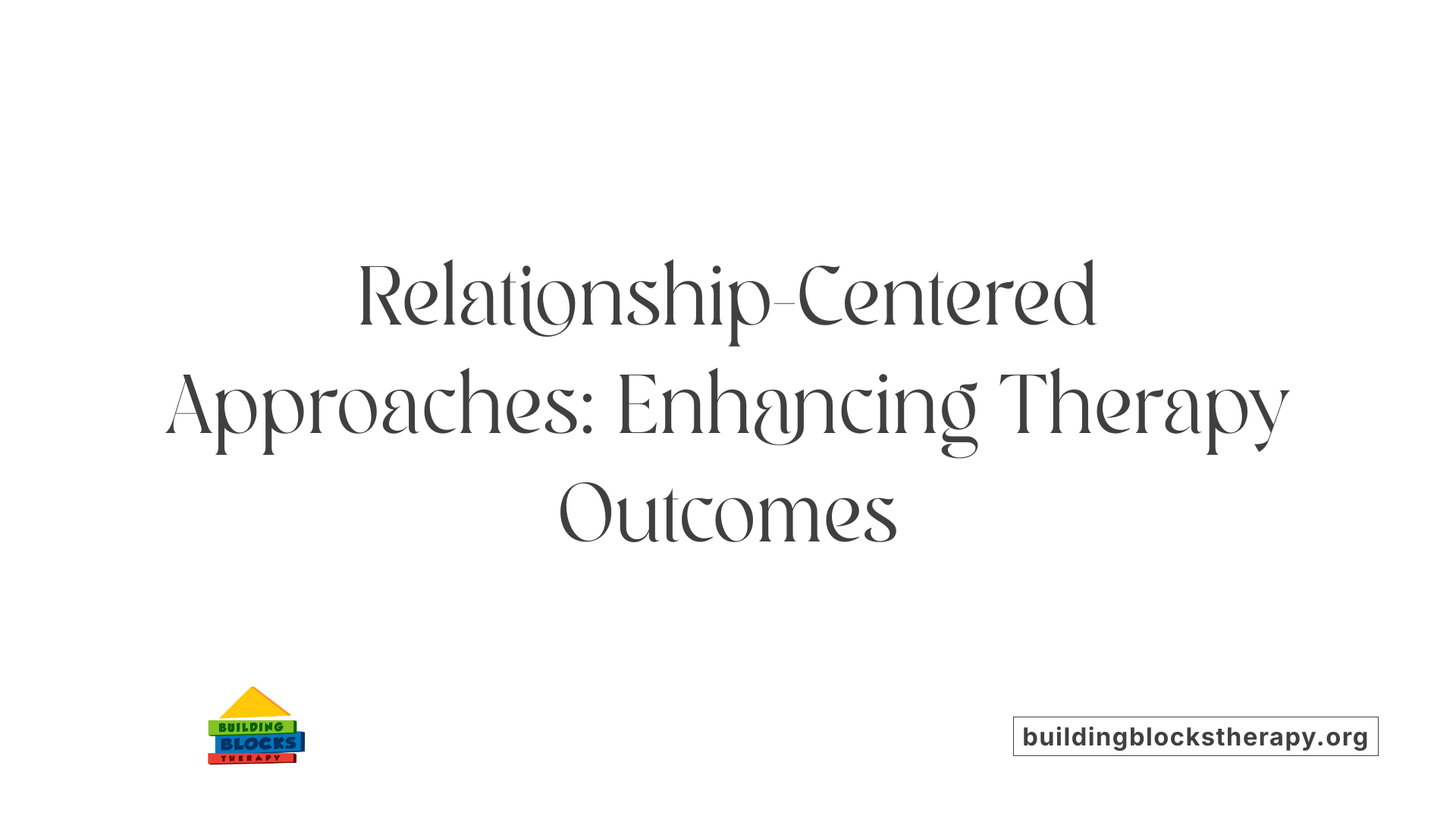
What strategies can therapists use to develop effective, trust-based relationships with children with autism and their families?
Building trust with children with autism and their families is essential for successful therapy. Therapists can achieve this by maintaining consistency in their approach, which helps children feel safe and predictable in therapy sessions. Setting clear expectations about activities and behaviors reduces confusion and anxiety.
Effective communication strategies tailored to each child's communication style foster understanding and cooperation. Incorporating a child's personal interests—such as favorite toys, activities, or topics—makes therapy engaging and meaningful. For example, using a child's special interest in fairies or other favorite themes can motivate participation.
Active and ongoing communication with caregivers is vital. Transparency about goals, progress, and daily strategies encourages collaboration and reinforces a shared sense of purpose. Respecting professional boundaries and avoiding overly familiar behaviors help maintain a professional yet warm relationship.
Celebrating small milestones together boosts confidence and demonstrates progress, strengthening the partnership. Involving family members in therapy, whether through participation or practicing skills at home, deepens the relationship and supports generalization of skills.
By focusing on these strategies—consistent routines, personalized content, clear communication, and collaborative involvement—therapists can develop strong, trust-based relationships that significantly enhance therapy effectiveness and promote positive outcomes for children with autism.
The Importance of Parent-Therapist Collaboration

What is the role of collaboration between therapists and parents/caregivers in autism therapy?
Collaboration between therapists and parents or caregivers is fundamental to successful autism treatment. When both parties work together harmoniously, they create a supportive environment that promotes consistent and effective intervention strategies.
Shared goal setting is a crucial element of this partnership. It ensures that everyone involved understands and aims for the same developmental objectives, aligning their efforts to support the child's growth.
Parental or caregiver involvement extends beyond just attending therapy sessions. Actively participating in therapy activities and practicing learned skills at home reinforces progress and fosters a sense of competence and confidence in caregivers.
Building a trusting relationship between families and therapists is essential. This trust enhances communication, helps address concerns promptly, and encourages adherence to intervention plans.
Moreover, open and transparent communication, along with respecting professional boundaries, helps sustain an effective partnership. Such collaboration not only improves treatment adherence but also provides emotional support for families navigating the challenges of autism.
Ultimately, strong parent-therapist collaboration leads to more tailored interventions, better generalization of skills across settings, and meaningful developmental advancements for children with autism. The combined efforts of families and professionals can make therapy more engaging, effective, and supportive for the child's unique needs.
Wrapping Up: Building Blocks for Successful Autism Therapy
The effectiveness of autism interventions is deeply rooted in the quality of relationships forged between therapists, children, and families. Building trust, understanding individual needs, leveraging play and naturalistic approaches, and fostering collaboration create a supportive environment where children feel safe, valued, and motivated to learn. Continuous attention to relationship dynamics not only enhances immediate therapy outcomes but also promotes long-term development and well-being. As research evolves, embracing relationship-centered practices remains essential for helping children with autism reach their full potential.
References
- Play therapy in children with autism: Its role, implications, and ...
- Therapeutic Alliance Formation for Adolescents and Young Adults ...
- Using Relationships to Support Children with ASD
- Learn the Secrets to Effective Rapport Building in ABA Therapy
- Strong and Effective Relationships with Parents and Therapists
- Understanding the secondary system of therapeutic alliance in ...
- Building Trust and Rapport with ABA Therapy Providers for Your ...
- Play Therapy for Autism: Benefits, Techniques & Tips - Forbrain
- Play therapy in children with autism: Its role, implications, and ...






